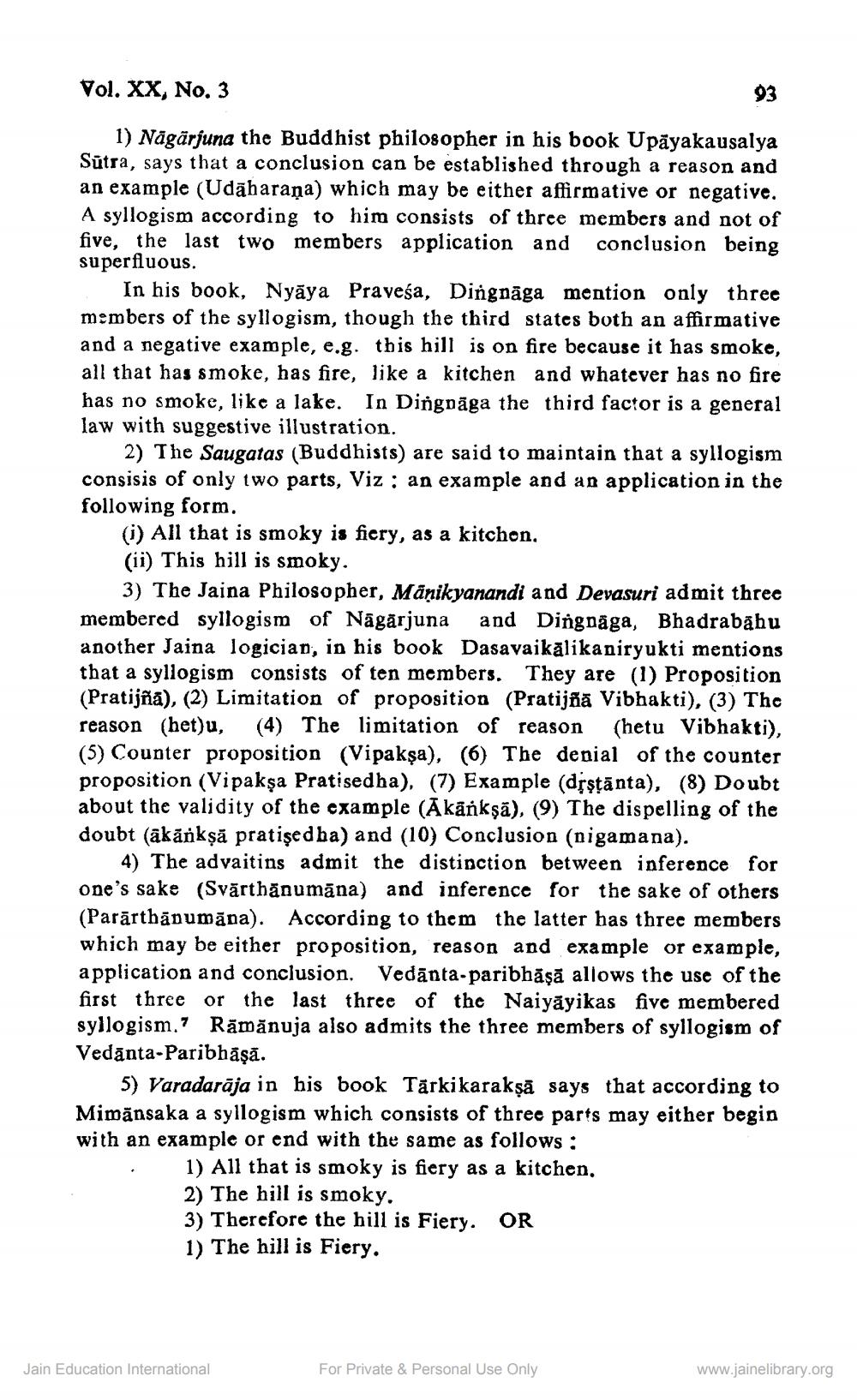________________
Vol. XX, No. 3
1) Nägärjuna the Buddhist philosopher in his book Upāyakausalya Sūtra, says that a conclusion can be established through a reason and an example (Udāharana) which may be either affirmative or negative. A syllogism according to him consists of three members and not of five. the last two members application and conclusion being superfluous.
In his book, Nyāya Pravesa, Dingnāga mention only three members of the syllogism, though the third states both an affirmative and a negative example, e.g. this hill is on fire because it has smoke, all that has smoke, has fire, like a kitchen and whatever has no fire has no smoke, like a lake. In Dingrāga the third factor is a general law with suggestive illustration.
2) The Saugatas (Buddhists) are said to maintain that a syllogism consisis of only two parts, Viz : an example and an application in the following form.
(i) All that is smoky is fiery, as a kitchon, (ii) This hill is smoky.
3) The Jaina Philosopher, Māņikyanandi and Devasuri admit three membered syllogism of Nāgārjuna and Dingnäga, Bhadrabahu another Jaina logician, in his book Dasavaikālikaniryukti mentions that a syllogism consists of ten members. They are (1) Proposition (Pratijñā), (2) Limitation of proposition (Pratijñā Vibhakti), (3) The reason (het)u, (4) The limitation of reason (hetu Vibhakti), (5) Counter proposition (Vipakşa), (6) The denial of the counter proposition (Vipaksa Pratised ha), (7) Example (drstānta), (8) Doubt about the validity of the example (Akankşā), (9) The dispelling of the doubt (ākānkșă pratişedba) and (10) Conclusion (nigamana).
4) The advaitins admit the distinction between inference for one's sake (Svārthānumāna) and inference for the sake of others (Parārthāpumāna). According to them the latter has three members which may be either proposition, reason and example or example, application and conclusion. Vedānta-paribhāsā allows the use of the first three or the last three of the Naiyãyikas five membered syllogism.7 Rāmānuja also admits the three members of syllogism of Vedānta-Paribhäşă.
5) Varadarāja in his book Tärkikarakṣā says that according to Mimānsaka a syllogism which consists of three parts may either begin with an example or end with the same as follows:
1) All that is smoky is fiery as a kitchen. 2) The hill is smoky. 3) Therefore the hill is Fiery. OR 1) The hill is Fiery.
Jain Education International
For Private & Personal Use Only
www.jainelibrary.org




